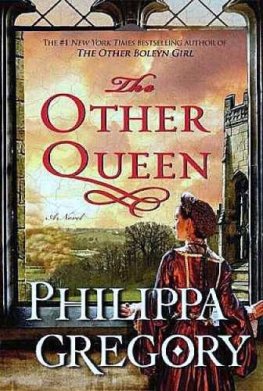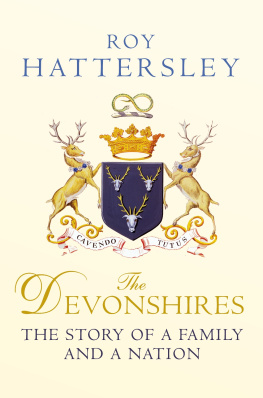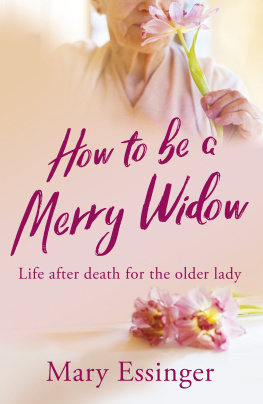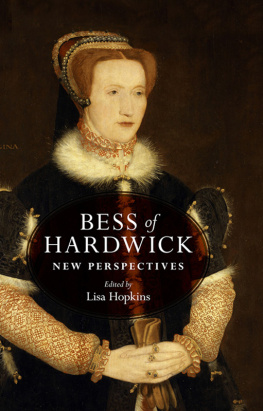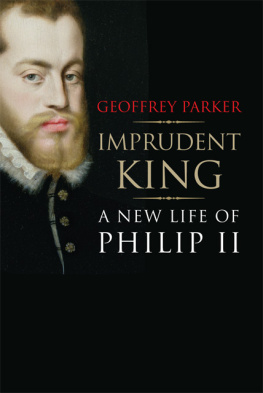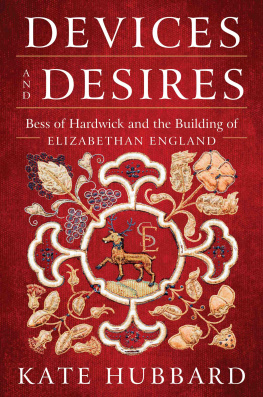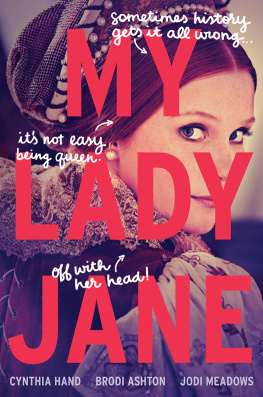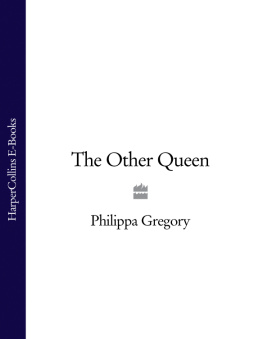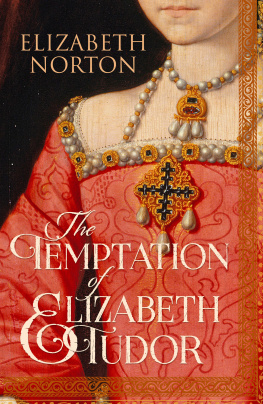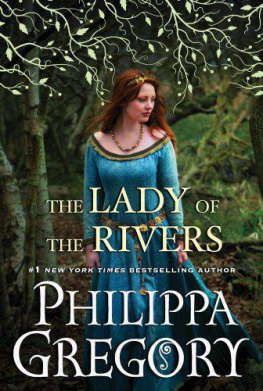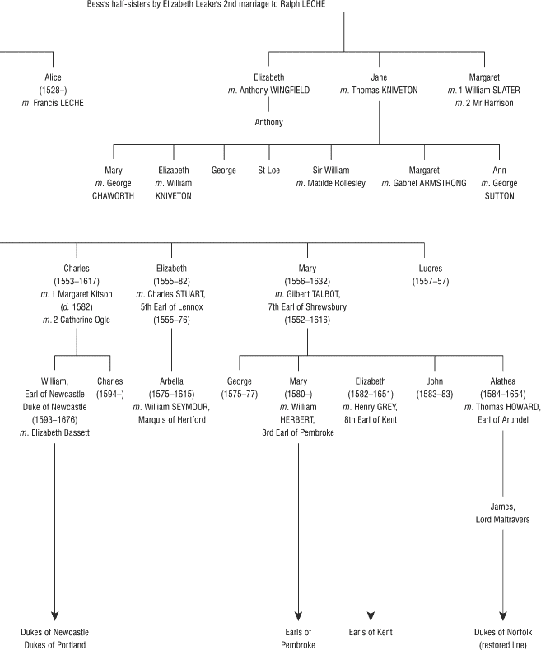MARY S. LOVELL
I assure you, there is no Lady in this land that I better love and like .
W. W. Norton & Company
Copyright 2005 by Mary S. Lovell
Lovell, Mary S.
Bess of Hardwick: empire builder / Mary S. Lovell.1st American ed.
p. cm.
Includes bibliographical references.
ISBN: 978-0-393-07579-3
1. Shrewsbury, Elizabeth Hardwick Talbot, Countess of, 1527?1608.
2. CountessesGreat BritainBiography. 3. Great BritainHistory
Elizabeth, 15581603Biography. 4. Women landowners
Great BritainBiography. I. Title.
DA358.S4L68 2006
942.05'5092dc22
[B]
W. W. Norton & Company, Inc.
500 Fifth Avenue, New York, N.Y. 10110
www.wwnorton.com
W. W. Norton & Company Ltd.
Castle House, 75/76 Wells Street, London W1T 3QT
This book is dedicated to Deborah, Dowager Duchess of Devonshire with my grateful thanks. Debo, as she prefers to be known, loves and cares for modern-day Chatsworth as Bess did for the original, and she has followed my research into Besss life with interest as well as much kind assistance.
INTRODUCTION
TO MOST PEOPLE WHO HAVE HEARD OF THE WOMAN WHO was born Elizabeth Hardwick in 1527, she is known simply as Bess of Hardwick and forever coupled to the jingle, Hardwick Hall, more glass than wall. This misquotation of a phrase said to have been coined by Robert Cecil referred to the innovative architecture of the new house Bess built for herself on her family property in Derbyshire. Anyone who has ever driven up the M1, north of the city of Nottingham, cannot fail to have seen the gaunt dark ruins of the old Hall at Hardwick dominating the skyline. Behind this structure lies another Hardwick Hall, a jewel of a building, and, amazingly, it remains intact, almost as Bess left it when she died in 1608.
Bess of Hardwick is remembered as a builder of great houses Chatsworth, Hardwick, Oldcotes and also as a dynast, for through her children she founded the Dukedoms of Devonshire, Portland and Newcastle, and the Barons Waterpark, and there is probably no aristocratic family in England, including the present monarchy, which does not contain her DNA. But there was far more to Bess than this.
She was born into a family of respectable gentry. They were landowners who lived in comparative comfort, but there was little money. Their land lay on the borders of Derbyshire and Nottinghamshire, remote from London by a journey of a week, and though good for raising sheep it was not especially valuable. In common with most girls of her class, her education was limited and Bess was not blessed with notable beauty. As the third daughter of five surviving children, her marriage settlement when she was married at the age of fifteen was respectable, but not significant. How, then, did this woman rise to become the Countess of Shrewsbury, and the most powerful woman in the land next to Queen Elizabeth I?
The simple answer would be that in her long life she was over eighty when she died, which was considered an astonishing age in those days when few of her contemporaries reached three score and ten she had four husbands, through whom she acquired her wealth. This received portrait of Bess was amusingly, though incorrectly, immortalised by Horace Walpole long after her death:
Four times the nuptial bed she warmed,
And every time so well performed,
That when death spoiled each husbands billing
He left the widow every shilling.
In an age when life was more precarious than it is now, Bess was far from being alone in having multiple spouses, yet no other non-royal woman of her times achieved a tenth as much as Bess did. And no other non-royal woman of her times comes down to us through history as a serious achiever. For that was what Bess was: an achiever. And she operated in an age when non-royal women had little education, virtually no legal rights, and were almost considered chattels of their husbands. How did she do it? I wanted to know.
In 1996 my literary agent and dear friend, the late Robert Ducas, suggested Bess of Hardwick as a subject for a biography. At that time I was deeply involved in other projects and I did no more than file the suggestion away with other possibles. Five years later, Deborah, now the Dowager Duchess of Devonshire and widow of one of Besss direct descendants, independently suggested to me that Bess was a very underrated personality.
Some basic exploratory research revealed that much of what had already been written about Bess concerned her life from middle age onwards, after she had married her fourth husband. I decided, when I first undertook to write this biography, to concentrate as far as possible on the early, unknown and unexplored parts of her life to discover how she developed into a formidably successful and frighteningly practical grand dame.
I first drew up a bibliography and followed this with a schedule of accepted academic research routes. One thing led to another, and after a while the known-about facts in published works began to give way to original material. At this stage satisfying chunks of new information began to appear. Major finds are rare in historical research, and the work mostly consists of looking for pieces, as in a jigsaw, which will fit together with material already well known about, and explain some fact or facts in a new and more enlightened way. Serendipity often plays a major role, too. Browsing through a second-hand bookshop on a rare day off one might come across a book one did not know existed and an item in the index that points the way to a reference missed by previous researchers. Or someone met at a dinner party might steer one in a new direction. Both of these things happened to me while researching this book. But the most important piece of serendipity concerned my own family or, to be strictly accurate, the family of my late husband.
Less was known about Besss enigmatic third husband, Sir William St Loe, and their time together than almost any other period of her adult life. The surname St Loe is not a common one, yet when I read his name it was not unfamiliar to me. I could not think why this should be, but the name of his family home provided a clue: Sutton Court, in the village of Chew Magna, in the county of Somerset. My husbands maternal family has one of those old Tudor tombs in the ancient church of St Andrew at Chew Magna. The colourfully painted effigy of Francis Baber is set on a marble bier next to and slightly higher than that of his wife, Anne. There they have lain in quiet harmony through the centuries, clad in their Sunday-best robes, immaculately ruffed at neck and wrists, hands permanently joined in prayer, surrounded by family crests, pious words and symbolic carvings. Every decade or so our family holds a world reunion, and invariably this is held at Chew Magna with a service in the family chapel. I vaguely recalled that the name St Loe was somehow associated with this church, so, having already attacked the libraries and archives of the Bodleian in Oxford, the British Library in London, the Public Record Office at Kew, and the Folger Shakespeare Library in Washington, DC, I lowered my sights and looked in my own library at home, at the research my husband and a cousin had once made into his family history.


